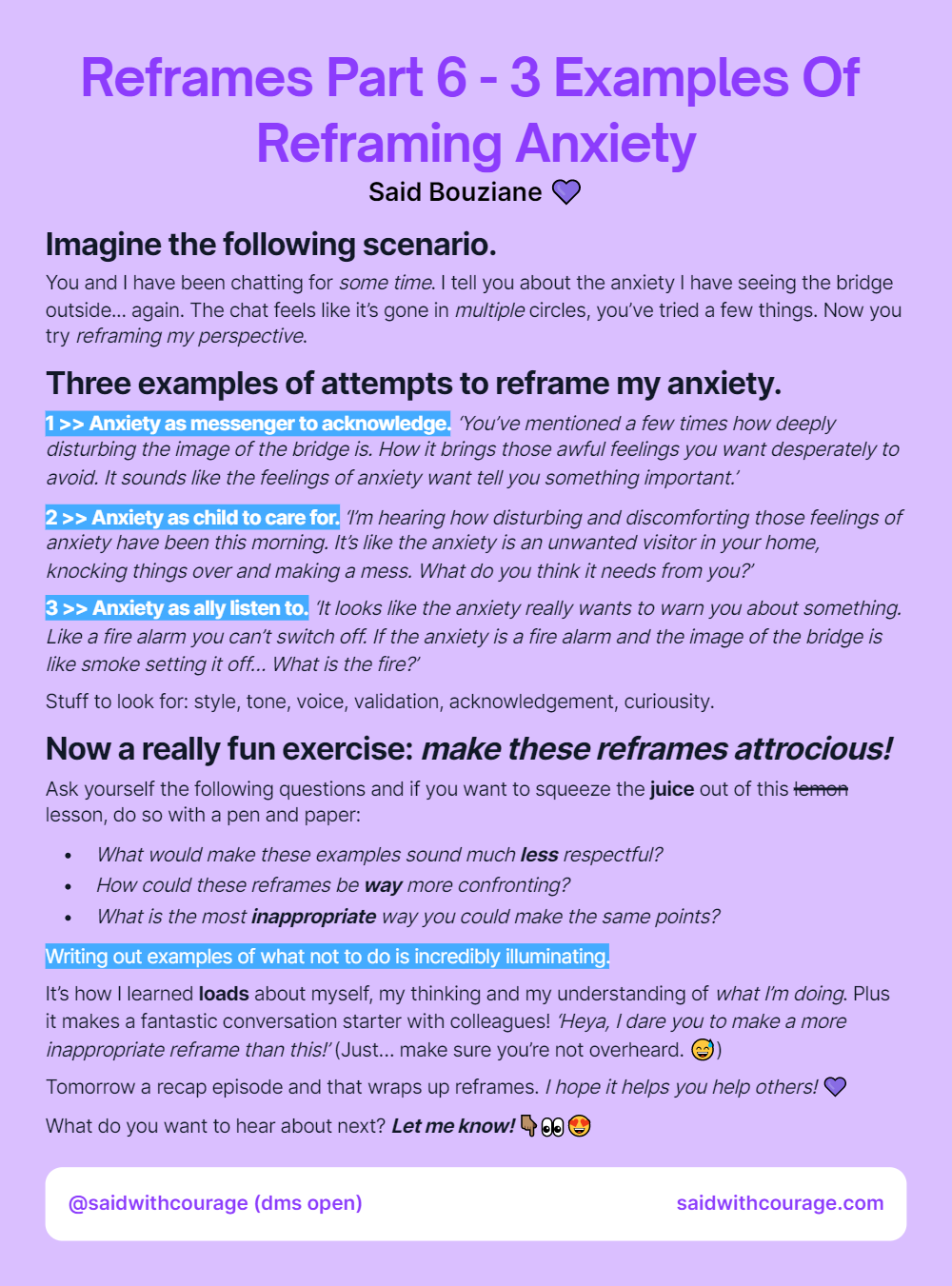Imagine the following scenario.
You and I have been chatting for some time. I tell you about the anxiety I have seeing the bridge outside… again. The chat feels like it’s gone in multiple circles, you’ve tried a few things. Now you try reframing my perspective.
Three examples of attempts to reframe my anxiety.
1 >> Anxiety as messenger to acknowledge. ‘You’ve mentioned a few times how deeply disturbing the image of the bridge is. How it brings those awful feelings you want desperately to avoid. It sounds like the feelings of anxiety want tell you something important.’
2 >> Anxiety as child to care for. ‘I’m hearing how disturbing and discomforting those feelings of anxiety have been this morning. It’s like the anxiety is an unwanted visitor in your home, knocking things over and making a mess. What do you think it needs from you?’
3 >> Anxiety as ally listen to. ‘It looks like the anxiety really wants to warn you about something. Like a fire alarm you can’t switch off. If the anxiety is a fire alarm and the image of the bridge is like smoke setting it off… What is the fire?’
Stuff to look for: style, tone, voice, validation, acknowledgement, curiousity.
Now a really fun exercise: make these reframes attrocious!
Ask yourself the following questions and if you want to squeeze the juice out of this lemon lesson, do so with a pen and paper:
- What would make these examples sound much less respectful?
- How could these reframes be way more confronting?
- What is the most inappropriate way you could make the same points?
Writing out examples of what not to do is incredibly illuminating.
It’s how I learned loads about myself, my thinking and my understanding of what I’m doing. Plus it makes a fantastic conversation starter with colleagues! ‘Heya, I dare you to make a more inappropriate reframe than this!’ (Just… make sure you’re not overheard. 😅)
Tomorrow a recap episode and that wraps up reframes. I hope it helps you help others! 💜
What do you want to hear about next? Let me know! 👇🏽👀😍

